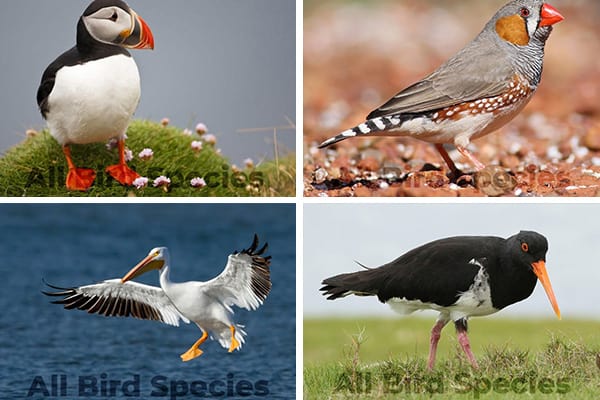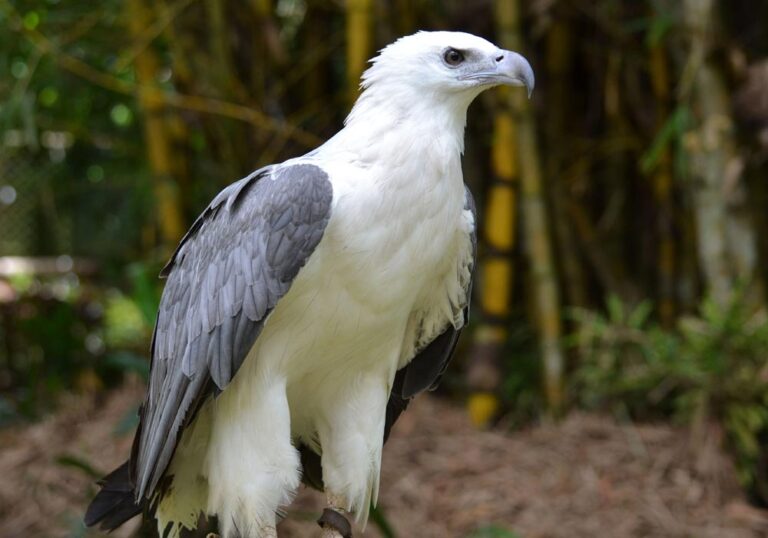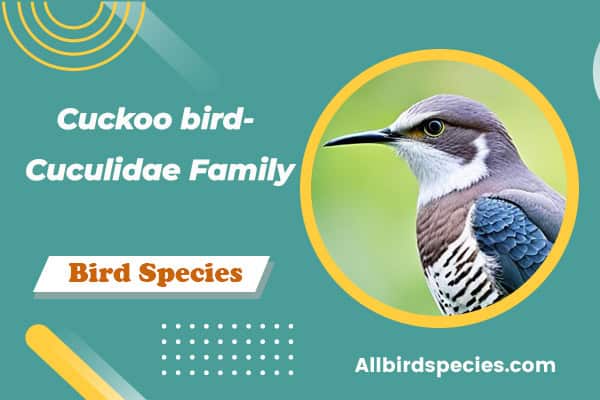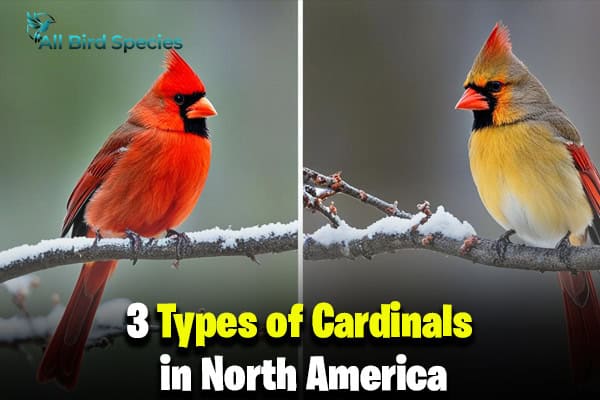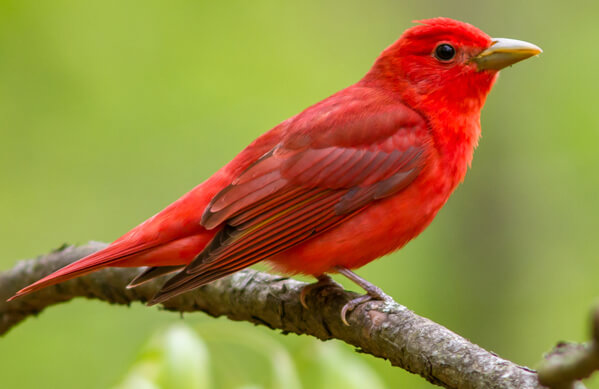11 Stunning Birds With Orange Beaks (With Pictures)
Our planet is home to a variety of colorful birds. Beaks, in particular, stand out – especially the orange ones! Birds With Orange Beaks not only catch the eye but also have cool special features. Let’s meet 11 such birds with standout orange beaks. From the impressive Toco Toucan to the delightful Northern Cardinal, they all have unique tales and traits to share.
1. Toco Toucan (Ramphastos toco)
- Size: 25-29 inches (63-74 cm)
- Weight: 1.5-3.5 lbs (0.7-1.6 kg)
- Lifespan: 20-25 years in the wild
- Diet: Fruits, insects, and small animals
You might know the Toco Toucan. It’s often the face of toucans in movies or ads, so much that some people think it’s the only kind! The Toco Toucan has a big characteristic – its massive bill. This bill becomes a tool, helping them get hard-to-reach fruits and berries. Imagine something between 6¼ to 9 inches long – that’s their bill length.

It features a bright yellow-orange on top and a darker red-orange below, ending with a large black spot. However, the bill isn’t just for style. It plays a key role in helping the toucan stay cool! It can hold a lot of heat, letting the bird keep its body temperature down. In the toucan’s warm, moist home, this is a major help for survival.
2. Northern Cardinal (Cardinalis cardinalis)
- Size: 8.3-9.1 inches (21-23 cm)
- Weight: 1.5-1.8 oz (42-51 g)
- Lifespan: 3-15 years in the wild
- Diet: Seeds, fruits, and insects
Love the Northern Cardinal? You’re not alone! This bird, with males in bright red and females in a comforting brown, is popular across North America. Can’t miss it with the orange-red beak, right? It’s a striking contrast against the feathers!

Spot these birds in gardens, forests, and shrubs – they’re frequent backyard visitors. Seed? Fruit? Insects? Yep, Cardinals eat them all. Especially during breeding season, they love some extra protein. These birds, known for their lovely songs, are a hit amongst those who love watching birds and enjoy nature.
3. Atlantic Puffin (Fratercula arctica)
- Size: 10-12 inches (25-30 cm)
- Weight: 14-16 oz (400-450 g)
- Lifespan: 20 years in the wild
- Diet: Fish, crustaceans, and squid
The Atlantic Puffin is a lovable seabird, famous for its vibrant look, especially in the mating season. Its noticeable orange bill is bold and bright, adorned with colors that make it seem like it’s sporting a stylish array of decorations. Puffins dwell on cliffs near the ocean in the North Atlantic, where they gather to breed.
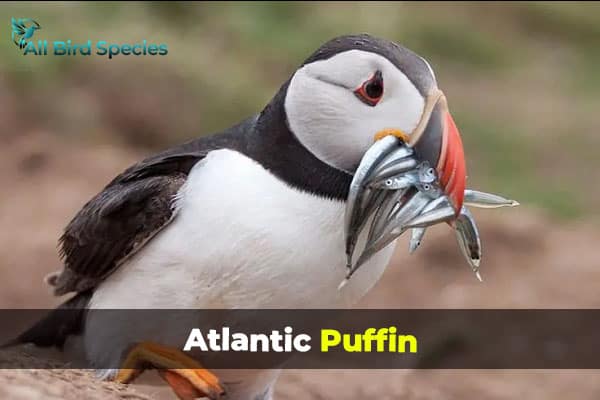
During warm summer periods, these Atlantic Puffins employ their beaks to snatch tiny sea creatures and fish. Exceptional at diving, they can plunge as deep as 200 feet for food. Their distinctive look and whimsical conduct make them a top pick for photographers loving wild life.
4. Variable Oystercatcher (Haematopus unicolor)
- Size: 16-18 inches (40-46 cm)
- Weight: 1.5-2.5 lbs (0.7-1.1 kg)
- Lifespan: 10-20 years in the wild
- Diet: Mollusks, crustaceans, and marine worms
Meet the Variable Oystercatcher, a unique bird spotted around the shores of New Zealand and Australia. Noticeable with its long, orange beak and vibrant black and white feathers, it’s easy to spot this creature on sandy beaches or rocky coastlines. These birds have beaks that are perfect for unlocking shellfish, making them superb hunters.

Often, you’ll spot oystercatchers strolling along the coast, on a food hunt. Their quirky habit involves using their beaks to dig or probe into the soil or mud, in search of their much-loved meals. The vibrant calls they make contribute to the spirited vibe of seaside locales.
5. Australian Zebra Finch (Taeniopygia castanotis)
- Size: 4.7-5.5 inches (12-14 cm)
- Weight: 0.5-0.7 oz (15-20 g)
- Lifespan: 5-10 years in captivity
- Diet: Seeds, grains, and some insects
The Zebra Finch, originating from Australia, is a petite and brightly hued bird. It’s the males who sport the robust orange beaks, a colorful contrast to their grey-white feathers. Grasslands and naked woodlands are their common habitats where they snack on seeds and grains.
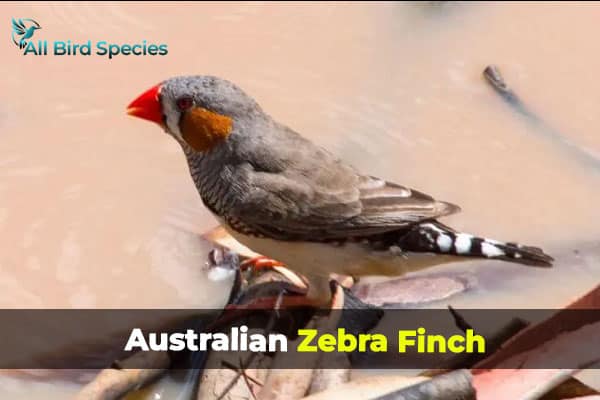
Often living in groups, these finches are energetic and fun to watch. Their joyous tweets and engaging antics make them favored companions. Known for being rugged and versatile in nature, they flourish in different surroundings.
6. American White Pelican (Pelecanus erythrorhynchos)
- Size: 50-65 inches (127-165 cm)
- Weight: 11-30 lbs (5-14 kg)
- Lifespan: 15-25 years in the wild
- Diet: Fish, crustaceans, and amphibians
The American White Pelican, a giant bird, makes it to this list with ease. They don’t have many predators so they can afford to stand out. Their white feathers and large orange bill can’t be missed in the wild. Just like their relatives, their big beak has a spacious pouch underneath for easy fish catch. They eat more than four pounds of fish a day. But they don’t dive to hunt, like some pelicans, they swim.

Besides, these birds prefer teamwork, often fishing in groups of as many as twelve to improve their catch rate.
- RELATED: White Birds in Florida
7. Black Oystercatcher (Haematopus bachmani)
- Size: 14-16 inches (35-40 cm)
- Weight: 1.5-2.5 lbs (0.7-1.1 kg)
- Lifespan: 10-15 years in the wild
- Diet: Mollusks, crustaceans, and marine invertebrates
Meet the Black Oystercatcher, a bird that stands out with its unique bill. Its plumage is all black, unlike the Variable Oystercatcher that sports some white. You’ll recognize this bird by its bill’s vivid color, ranging from bright orange to striking red.
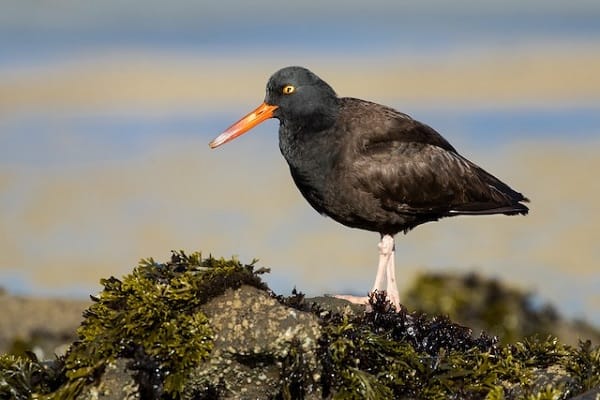
Look for the orange eye ring and the yellow iris, which are distinctive traits. It loves hanging out on rocky coastlines down the western side of North America. And that colourful bill isn’t just for show; it’s a tool this bird uses to pry open mussel shells and find food hidden in rock crevices.
8. Crested Auklet (Aethia cristatella)
- Size: 10-12 inches (25-30 cm)
- Weight: 10-12 oz (280-340 g)
- Lifespan: 15 years in the wild
- Diet: Fish, zooplankton, and crustaceans
The Crested Auklet is a small seabird known for its unique appearance and charming personality. During the breeding season, it develops a distinctive crest and an orange bill adorned with colorful feathers. These birds are primarily found in the Bering Sea and along the coasts of Alaska and Siberia.
These Crested Auklet birds with orange beaks feed mainly on fish and zooplankton, diving underwater to catch their prey. They are known for their social behavior and often nest in large colonies, creating a lively atmosphere on the cliffs where they breed. Their playful antics and bright beaks make them a delightful sight for birdwatchers.
9. African Skimmer (Rynchops flavirostris)
- Size: 14-16 inches (35-40 cm)
- Weight: 7-10 oz (200-280 g)
- Lifespan: 10 years in the wild
- Diet: Fish and invertebrates
The African Skimmer is a unique and elegant bird known for its striking appearance and unusual feeding technique. With its distinctive orange beak and black upperparts, this bird is often found along rivers, lakes, and coastal areas in Africa. The lower mandible of its beak is longer than the upper, allowing it to skim the water’s surface while hunting for fish.
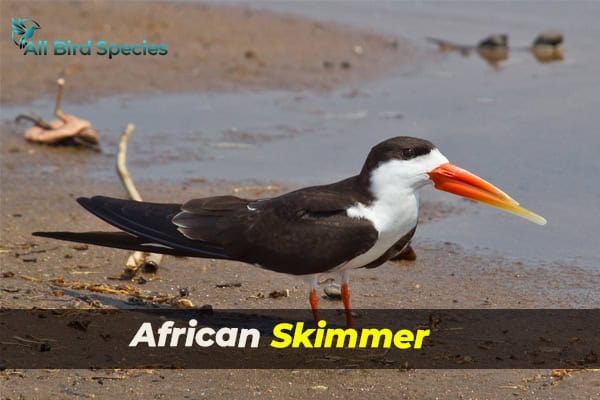
These African Skimmer birds wit orange beaks are often seen flying low over the water, using their beaks to catch fish and invertebrates. Their striking appearance and graceful flight make them a favorite among birdwatchers. They are social birds and are often seen in groups, adding to the liveliness of their habitats.
10. Royal Tern (Thalasseus maximus)
- Size: 15-19 inches (38-48 cm)
- Weight: 8-15 oz (225-425 g)
- Lifespan: 15-30 years in the wild
- Diet: Fish and crustaceans
The Royal Tern is a beautiful coastal bird known for its elegant appearance and striking orange bill. Found along the Atlantic and Pacific coasts of the Americas, this bird is often seen near sandy beaches and estuaries. These birds with orange beaks are not only eye-catching but also perfectly adapted for catching fish.
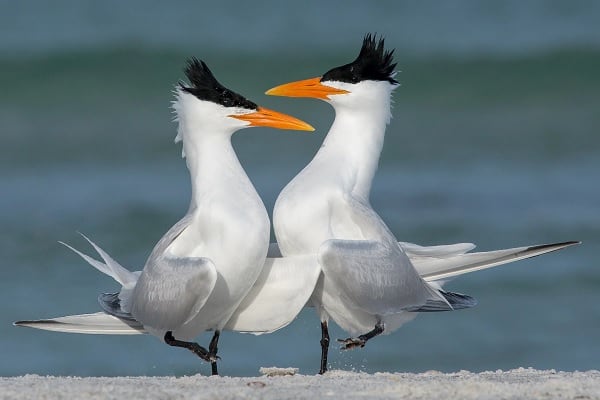
These terns are skilled hunters, diving into the water to catch fish and crustaceans. They are known for their graceful flight and loud calls, which contribute to the lively atmosphere of coastal areas. Their striking appearance makes them a favorite among birdwatchers and nature enthusiasts.
11. Grey-headed Gull (Chroicocephalus cirrocephalus)
- Size: 15-18 inches (38-46 cm)
- Weight: 10-14 oz (280-400 g)
- Lifespan: 10-20 years in the wild
- Diet: Fish, crustaceans, and carrion

The Grey-headed Gull is a common sight in coastal areas, known for its striking grey head and orange beak. These gulls are often found near beaches, rivers, and lakes, where they hunt for fish and scavenge food. Their bright orange beak adds to their unique appearance, making them easy to identify.
Grey-headed Gulls are opportunistic feeders and will eat a variety of foods, including fish, crustaceans, and carrion. They are social birds, often seen in large flocks, which adds to the lively atmosphere of coastal environments. Their adaptability and resilience make them a vital part of the coastal ecosystem.
Final Thoughts
Orange-beaked birds are not only eye-catching; they’re important to their habitats. Each bird, from the remarkable Toco Toucan to the delightful Northern Cardinal, has distinct traits that allow it to flourish. Spotting these spectacular birds can bring happiness to birdwatchers and nature lovers. No matter if you’re on a sandy beach, nestled in a rich forest, or near a peaceful river, watch for these exceptional birds with orange beaks. Their vivid hues and active actions can undoubtedly uplift your mood and heighten your admiration for nature’s marvels.

